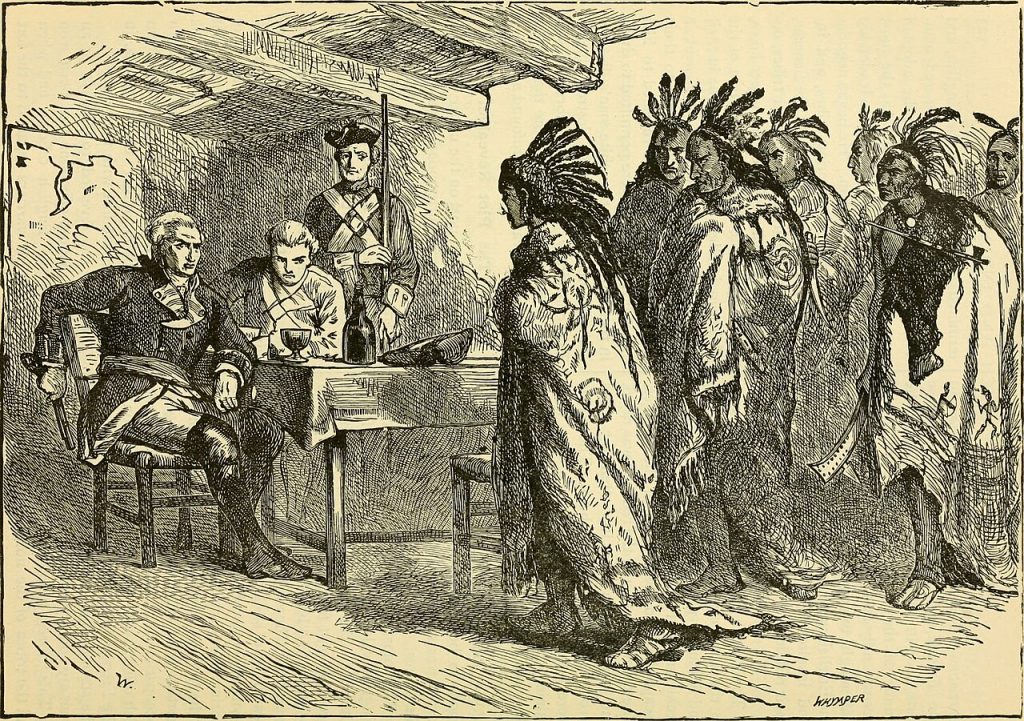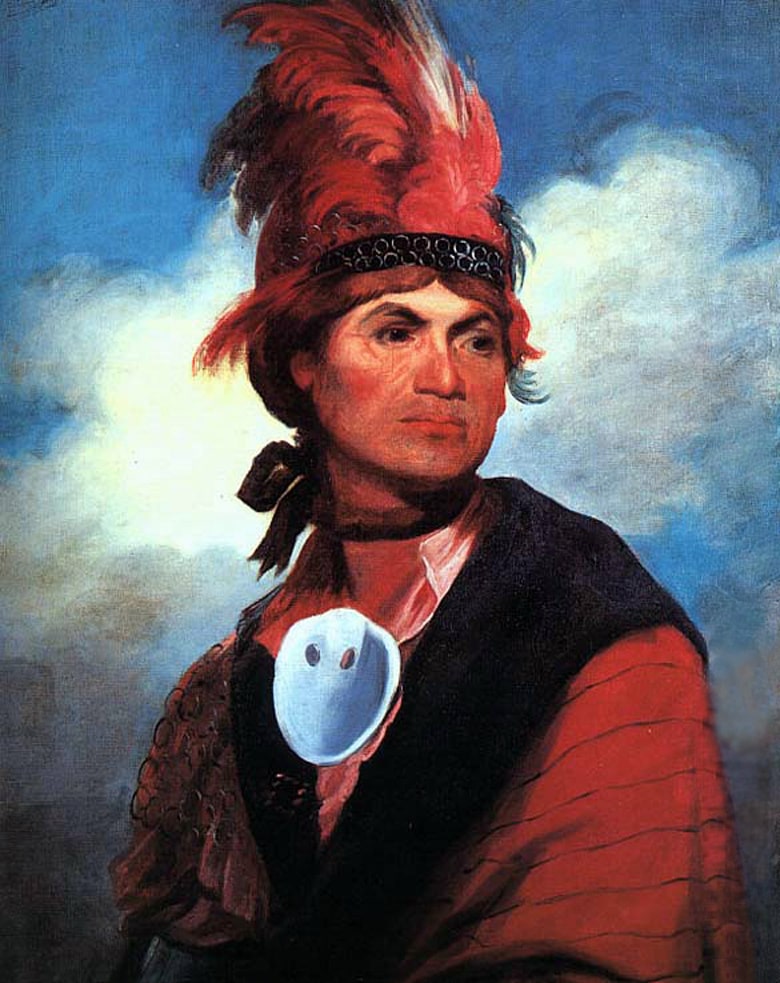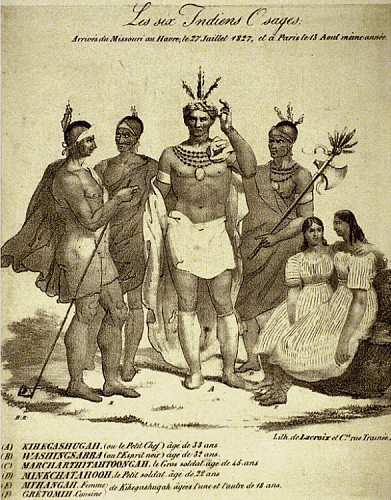Contents
Contents
Native Americans went through a huge amount of suffering, and a destruction of their culture, as a result of the American Revolution.
Many tribes allied with either the Patriots or Loyalists, in order to try and protect their land. This meant that they were regularly involved in fighting, and were often displaced as territory was captured by either side.
But after the war ended, the violence faced by Native Americans increased in most parts of North America, regardless of which side a tribe fought on.
In the 1783 Treaty of Paris, the British ceded a huge amount of territory to America, much of which was occupied by Native American tribes. The new United States government was in debt, and sought to raise money by claiming this fertile, resource-rich land. This required it shore up control of its new territory, removing native populations in the process.
During the war
For the most part, Native American nations preferred to remain neutral during the Revolutionary War.
Many tribes had lost significant amounts of land as a result of the French and Indian War, and would have preferred to avoid getting involved in the conflict.

However, the Revolutionary War represented a continual threat to Native American territory and prosperity. Many Native American tribes were effectively forced to pick a side, in return for the protection of their land, and continued access to trading posts, allowing tribes to sell fur, tools, foodstuffs and other goods to white settlers.
Many groups of Native Americans chose to side with the British, as it was the Americans who were making the majority of the territorial advancements at the time.
In 1763, the British implemented the Proclamation Act, which was designed to stop the settlers from encroaching on native land, although it was ineffective in practice. The British also tended to have stronger existing relationships with the native population, especially when it came to trade.

In spite of this, it was not uncommon for Native Americans to ally with the Americans, where relationships existed, or where promises of Native American sovereignty were made. The Catawba, Delaware, and Maliseet nations all fought alongside the Patriots.
Some groups, such as the Cherokees and the Iroquois Confederacy, saw a split, whereby some tribes fought with the British, and some fought with the Americans. Traditional alliances and kinship networks were broken by the war, leading to the fragmentation of previously strong Native American confederacies.
In battle, the Native Americans were renowned for their guerilla warfare abilities. They were adept at making surprise attacks, often at dawn or dusk, and using the terrain to their advantage. They also began to use modern weapons such as muskets throughout the war, and were adept marksmen.
The British often used Native American forces to conduct raids against towns that supported the Patriot cause. These raids were effective, which led to significant retaliation from the Continental Army.
In 1779, General John Sullivan led an attack on Iroquois villages, in an attempt to destroy their crops, crush their morale, and prevent any more raids from occurring. It is unknown how many Native Americans died, but it is estimated the Sullivan Campaign created 5,000 refugees, who fled to the British at Fort Niagara.
After the war
The end of the American Revolution saw continued territorial losses for the Native American people, despite the existence of written guarantees and laws that supposedly offered them protection.
Tribes that sided with the British during the war were particularly hard done-by. At the Treaty of Paris, the British gave up huge amounts of territory east of the Mississippi River, with no protections for their Native American allies that remained on the land.

The United States soon began expanding westward and claiming this territory for itself, in order to settle on its fertile farming lands, and to raise money by selling acreage to settlers.
It was seen as both a divine right and a duty to spread democracy and American values, even though the expansion forcibly displaced hundreds of thousands of Native Americans from their homelands.
The Northwest Ordinance of 1787 described how these new territories would be settled, and merged into the United States, through the creation of new states.
With regards to the native peoples of the land, it stated:
The utmost good faith shall always be observed towards the Indians; their lands and property shall never be taken from them without their consent; and, in their property, rights, and liberty, they shall never be invaded or disturbed, unless in just and lawful wars authorized by Congress…
In practice, this was not followed, leading to open conflict, such as the Northwest Indian War from 1785-1795. Native American tribes founded the Northwestern Confederacy, and initially saw huge success in repelling the American army from their territory, with the help of the British in Canada. However, they were eventually defeated, leading the tribes to lose vast tracts of land in the Ohio Valley.
Even those tribes that attempted neutrality or sided with the Americans found little improvement in their situation. The end of the Revolutionary War did not lead to the re-establishment of Native American sovereignty as many had hoped.
Treaties and agreements made during the conflict were frequently ignored or renegotiated under duress, leading to significant land loss. For example, despite the Oneida’s support of the Americans, they, like many other tribes, were pressured into ceding large portions of their land in the years following the war.
American settlers, driven by a desire for land and resources, continued encroaching upon Native American territories, leading to a series of conflicts and forced relocations.
These conflicts continued into the 19th century, culminating in policies of removal and assimilation that sought to eradicate Native American society and culture.
Despite the ideals of liberty, democracy, and the rights of man espoused by Revolutionary War leaders, Native Americans did not see this ideology applied to their people, even after the war ended in 1783.


